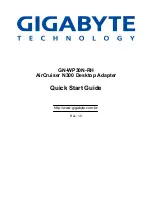
Failover
To
fail over
means to reverse the direction of remote replication in a DR group pair. A
failover event
is an event in which the remote replication direction was reversed.
When a failover event occurs, the roles of source and destination in a DR group pair are reversed.
For example, in a
planned failover
, if DRgroupA was originally the source and DRgroupB was the
destination, those roles are reversed when DRgroupB is failed over.
In the case of an unplanned failover (disaster), there may not be a literal reversal of remote replication
because SiteA may not be operational. Instead, when DRgroupB is failed over, SiteB may become an
independent site, or a source that remotely replicates to third site.
Performing a planned or unplanned failover involves technical preparation and signi
fi
cant operational
planning. Host I/O is impacted by a failover. The following guidelines capture just a few of the
technical considerations.
•
To fail over a DR group pair, you must specify the destination DR group. See
DR group pair
.
•
You cannot fail over a DR group pair if remote replication is suspended or if a remote copy (virtual
disk) is in an unknown state. See DR groups
suspension state
and virtual disks
resource states
.
•
If only one component in a DR group pair fails, repairing that single component may be
preferable to performing a failover.
IMPORTANT:
Failing over a DR group pair impacts host I/O. Ensure that you understand the potential impacts of
performing a failover.
See also DR groups
suspend on failover
and
remote replication guidelines
.
Failsafe on link-down/power-up
Failsafe on Link-down/Power-up
is a data protection feature which speci
fi
es whether or not virtual disks in
a source DR group are automatically re-presented to hosts after a power-up (reboot) of the source storage
system when the links to the destination DR group are down. Values are:
•
Enabled
. When enabled, virtual disks in a source DR group are not automatically re-presented
to hosts after a link-down power-up (reboot) of the source storage system. This behavior is
called
presentation blocking
and provides data protection under several circumstances. See
Operational State - Blocked
.
•
Disabled
. When disabled, virtual disks in a source DR group are automatically re-presented to
hosts after a link-down power-up (reboot) of the source storage system.
Default setting and user control
•
When a DR group pair is created, Failsafe on Link-down/Power-up (presentation blocking) is
enabled by default.
•
After a DR group pair is created, some versions of controller software allow you to change the
Failsafe on Link-down/Power-up setting. In other versions, the setting cannot be changed. See
Controller Software Features - Remote Replication
.
Failsafe on unavailable member
Failsafe on unavailable member
is a data protection feature which speci
fi
es how host-writes, logging,
and remote replication occur when a component in the DR pair becomes unavailable during normal
power-on operation. Values are:
•
Enabled
• While all components in the DR group pair function normally, host writes, logging, and
remote replication continue normally.
HP StorageWorks Replication Solutions Manager 4.0.1
101
Содержание 418800-B21 - StorageWorks Modular Smart Array 70 Storage Enclosure
Страница 16: ...Tables 1 Document conventions 18 16 ...
Страница 20: ...20 About this guide ...
Страница 56: ...56 Replication Solutions Manager ...
Страница 160: ...160 Host volumes ...
Страница 384: ...384 Managed sets ...
Страница 402: ...402 Oracle ...
Страница 412: ...412 Storage systems ...
Страница 444: ...444 Virtual disks ...
Страница 456: ...456 CLUI ...
















































